
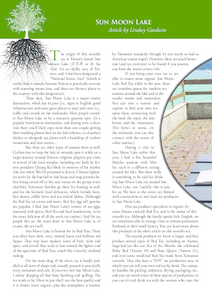 |
|
The origin of this month's tea is Taiwan's famed Sun Moon Lake (日月潭 or Ri Yue Tan). It's an idyllic area of Taiwan, and it has been designated a "National Scenic Area" (which is cooler than it sounds, because Taiwan is practically overrun with stunning nature sites, and there are thirteen places in the country with this designation). These days, Sun Moon Lake is a major tourist destination, which has its pros (i.e., signs in English, good infrastructure and some great places to stay) and cons (i.e., traffic and crowds on the weekends). Most people consider Sun Moon Lake to be a romantic getaway spot. It's a popular honeymoon destination, and during even a short visit there you'll likely espy more than one couple getting their wedding photos shot on the lake's shores, in a bamboo thicket or alongside tea plants with a backdrop of verdant mountains and clear waters...
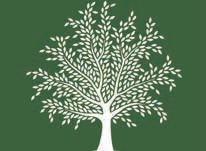
But there are other types of tourists there as well: Cyclists love to loop the lake or meander past it while on a larger journey around Taiwan; religious pilgrims pay visits to several of the local temples, including one built by former president Chiang Kai-Shek in memory of his mother (the one where Wu De proposed to Joyce); Chinese sightseers arrive by the bus-full to ride boats and snap pictures before being carted off to the next venue on the group tour's checklist; Taiwanese families go there for boating as well, and for the fantastic local delicacies, which include bamboo shoots, edible ferns and tea-related dishes. (Although the Red Tea ice cream and sweet, Red Tea 'egg roll' pastries are popular, I find Sun Moon Lake's version of tea eggs, seasoned with spices, Red Tea and local mushrooms, to be the most delicious of all the area's tea cuisine.) And for tea people like us, the main draw to Sun Moon Lake is, of course, the tea itself.
Sun Moon Lake is famous for its Red Teas. These teas often have dark, wiry, twisted leaves and brilliant red liquor. They may have opulent notes of fruit, mint and spice, and overall they tend to lean toward the lighter end of the spectrum of Red Teas, much like a heavily oxidized oolong.
On the main drag of the town, tea is loudly peddled at all sorts of shops and casually poured at practically every restaurant and cafe. If you ever visit Sun Moon Lake, I advise skipping all that busy hawking and spilling. The tea tends to be (How to put this?) not the best quality and it is almost never organic, plus the atmosphere is touristy by Taiwanese standards (though it's not nearly so bad as American tourist traps!). However, there are much better teas (and tea environs) to be found if you journey out from the town's center a bit.
If you bring your own tea or are able to source some organic Sun Moon Lake Red Tea while in the area, there are countless spaces for outdoor tea sessions around the lake and in the nearby woods and mountains. You can rent a scooter and explore to find your own tea spots there, connecting with the land, the water, the lake breeze and the mountains. (For better or worse, on the weekends, you can also connect with the scores of other tourists.)
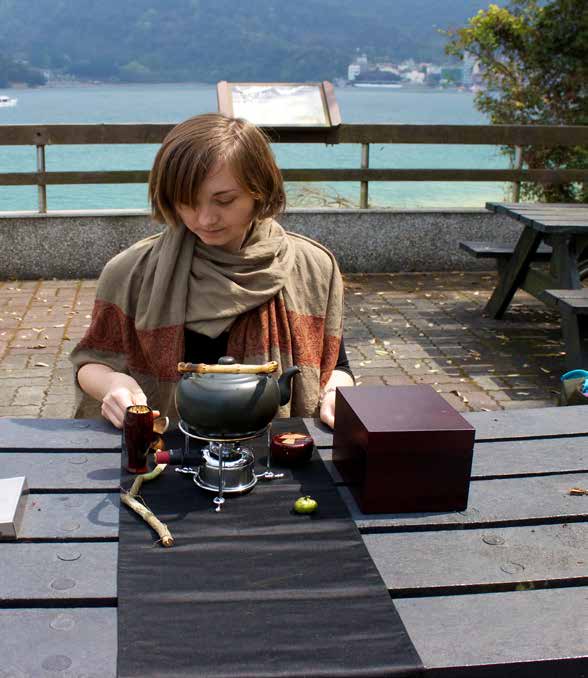
During a visit to Sun Moon Lake earlier this year, I had a few beautiful Matcha sessions with Merlin, each in a different setting around the lake. But there really is something to be said for drinking Sun Moon Lake tea around Sun Moon Lake, too. Luckily, this is easy for us. We here at the center are blessed with connections to two local tea producers in Sun Moon Lake.
One tea producer specializes in organic Assamu (Assam varietal) Red Tea, and is the maker of this month's tea. Although the family speaks little English, we are sometimes able to arrange visits to witness production firsthand at their small factory. You can learn more about this producer in the short article on this month's tea.
The second producer we know is larger, and they produce several types of Red Tea, including an Assamu, large-leaf tea like our Tea of the Month, the celebrated Ruby Red (Taiwan 18) and Rose Quartz (Taiwan 21), and even some small-leaf Red Tea made from Taiwanese varietals. They also have a "DIY" tea production area, in which you can roll your own red tea by hand. The company handles the picking, oxidation, drying, packaging, etc., and you can watch some of these aspects of production, or you can sit and drink tea with the woman who runs the company (and her sister, who speaks English). But the real joy in visiting this factory is rolling the tea!
If nothing else, rolling your own tea gives you a sense of the incredible skill held by tea masters. In my travels, I've had the chance to see many people try their hands at tea production for the first time. Almost every time I've witnessed this, a newbie exclaims something along the lines of, "This is much harder than I thought it would be! You really have to work to make tea." (And most of the time, they weren't even awake before dawn to harvest the leaves!) We all know in theory that making tea by hand is difficult, but (to state the obvious) we can't know this experientially until we actually experience making tea for ourselves. This firsthand experience of working with tea leaves generates immense respect for the people who produce our tea, and for the tea itself. Furthermore, rolling your own tea can provide a much more direct, visceral and even spiritual connection with tea than you might imagine. The Ruby Red varietal is particulary suited for this kind of participation with the Leaf. During rolling, its thick cell walls rupture to ooze out a syrupy juice that smells of wintergreen, cinnamon and ripe fruit. As you work, gripping, rolling and releasing these increasingly sticky leaves over and over again, your hands are stained russet. You then lean forward repeatedly to put a little weight into the rolling, and your back and shoulders slowly begin to feel warm, then sore. You can feel the effort clearly. You can feel the rewards for your effort clearly. And if you pay close attention, you can feel something else happening: You can feel the tea interacting with you in a less physical, more spiritual, way.
Even more so than water, tea is a spectacular sender and receiver of energy. Many of you have felt this in your tea drinking and preparation, so you know of what I speak. Imagine feeling that same kind of communication, only with leaves that were plucked from trees that morning, and which are being shaped (by you) into leaves which will be infused and consumed (likely by you and people close to you)...
Although I didn't do this the first couple times I rolled tea (I was too focused on getting the basic technique down!), now I like to roll tea with an intention to communicate Tea spirit through the leaves and to help people connect to Nature and themselves through tea. I like to put metta (loving-kindness) into the tea. I can't say whether it helps the taste, but it certainly seems to help those who drink it, and that's what really matters.
There's another way tea people like ourselves enjoy connecting with tea in Sun Moon Lake. This one involves old tea trees. Sun Moon Lake has a unique history of tea production dating back slightly under one hundred years. During the Japanese occupation of Taiwan, the Japanese government tried to move Taiwanese farmers away from Oolong production. The Japanese tea company Nitton wanted to (and, for a time, did) fiercely compete with international Red Tea brands like Lipton; and the Japanese government wanted their newly acquired lands to produce a markedly different product from the Green Teas of Japanese make, a product which would create more profit for their empire. For this reason, they pushed Oolong producers into Red Tea production, and set up a tea research and production facility in Sun Moon Lake for making the Red Tea venture more prosperous. When the era of Japanese occupation ended, some farmers returned to Oolong production (and aren't we glad they did!), while a few others stuck to Red Tea, generally in climates and elevations especially suited to it. The efforts to generate successful Taiwanese Red Teas were and continue to be part of what makes Taiwan's tea production so special and unique. However, in Sun Moon Lake production was abandoned for several decades after the Japanese were expelled, and then restarted in modern times.
In the early days of Taiwanese Red Tea research and production, several large plots of sloped land near the lake were planted with tea seeds. Each seed was genetically distinct, and each of the many surviving plants has its own variances. During a stroll through the groves, you can easily see that some trees grow tall and lanky as though reaching for the sun and moon, while others spread gracefully upwards and outwards like a half-unfolded fan. And you may even glimpse ones that remain squat and stocky like a Hobbit nearing his 111th birthday, or rise thick and dense from the soil like a stone column from more ancient times. A closer look will show you that there are infinite other differences. One tree's leaves are waxy and thick, with sawtoothed serrations along the edges and veins a few shades off from the deep, blue-green of their flesh; another's leaves are a tinge more yellowy, smaller and completely smooth around the edges, with veins that bulge out rather than differentiate themselves by color. The density of the leaves changes completely from one tree to the next, as does the abundance (or lack) of flowers (which may, themselves, differ in size, shape, color, etc.). And the seed pods! Encasing one or more seeds, these pods: fuzzy and tawny, waxen and emerald, thick and parched like dried citrus peel, thin like soaked birch bark wrapped around pearls. They show such variance, perhaps hinting at the treasure troves of genetic material contained within.
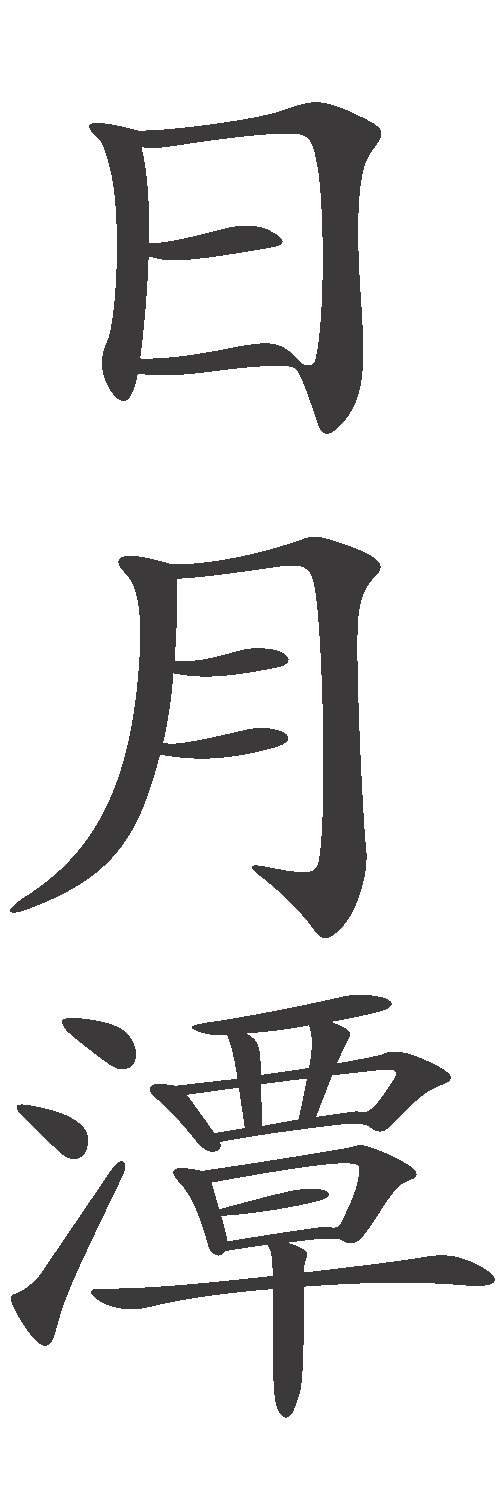
A closer look reveals that these are not just surface differences: Just as processing and steeping the leaves of each of these plants would produce a vast assortment of tastes and aromas, stopping to get a sense of the plants themselves uncovers a very different sense of 'Being' from each plant. The spirit of Tea is clear as soon as you step onto the overgrown fields, but the spirits of the individual tea plants show themselves a little more slowly. If you take the time to do so, connecting with the plants in this way can be a profoundly meaningful experience, and a tremendous way to connect more deeply with Tea's essential nature.
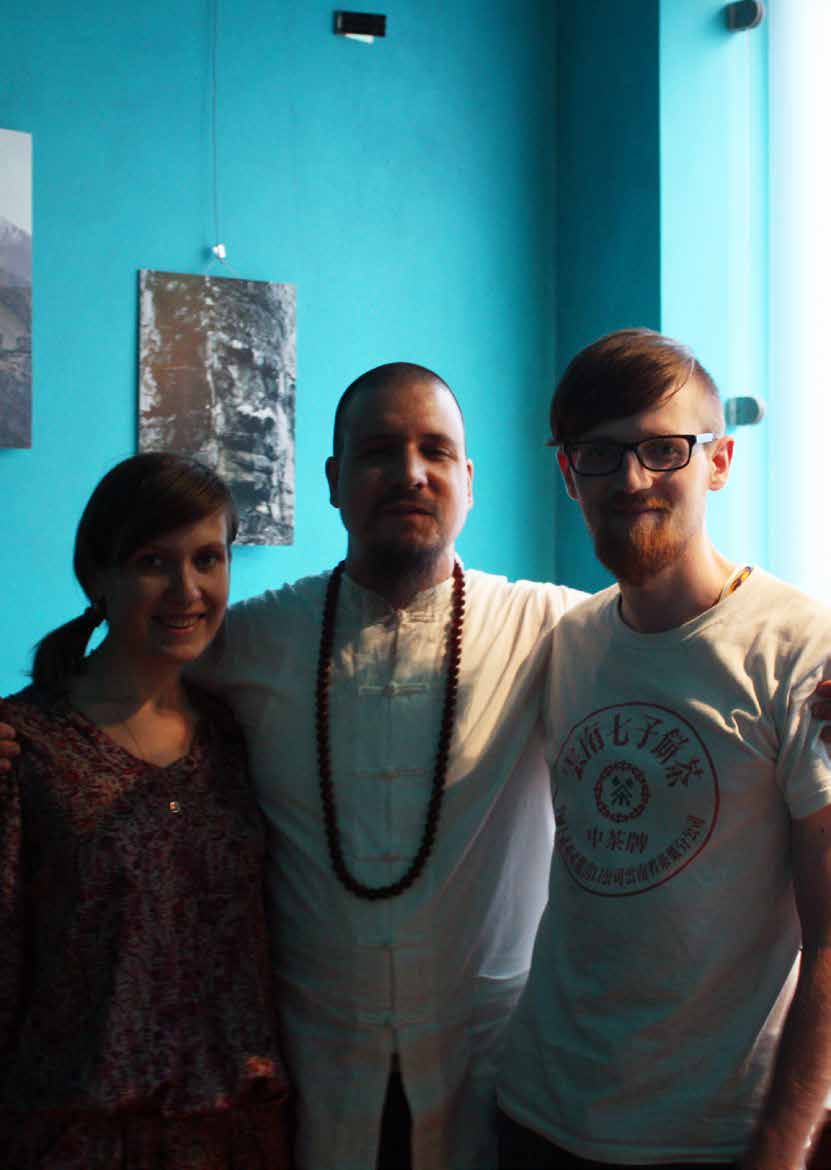
If you have the chance to visit our center in Taiwan for more than a couple weeks, I highly recommend a two- or three-day trip to Sun Moon Lake while you're in the area. In addition to being all-round awesome, it's accessible by public transit (Three cheers for Taiwanese infrastructure!) and it's very reasonably priced by Western standards. We can help you arrange a visit to see the old tea trees, set you up at an incredible guest house and organize an opportunity to do some tea rolling of your own. But that's in another Now... For the time being, share this month's gorgeous tea with someone who needs it!
